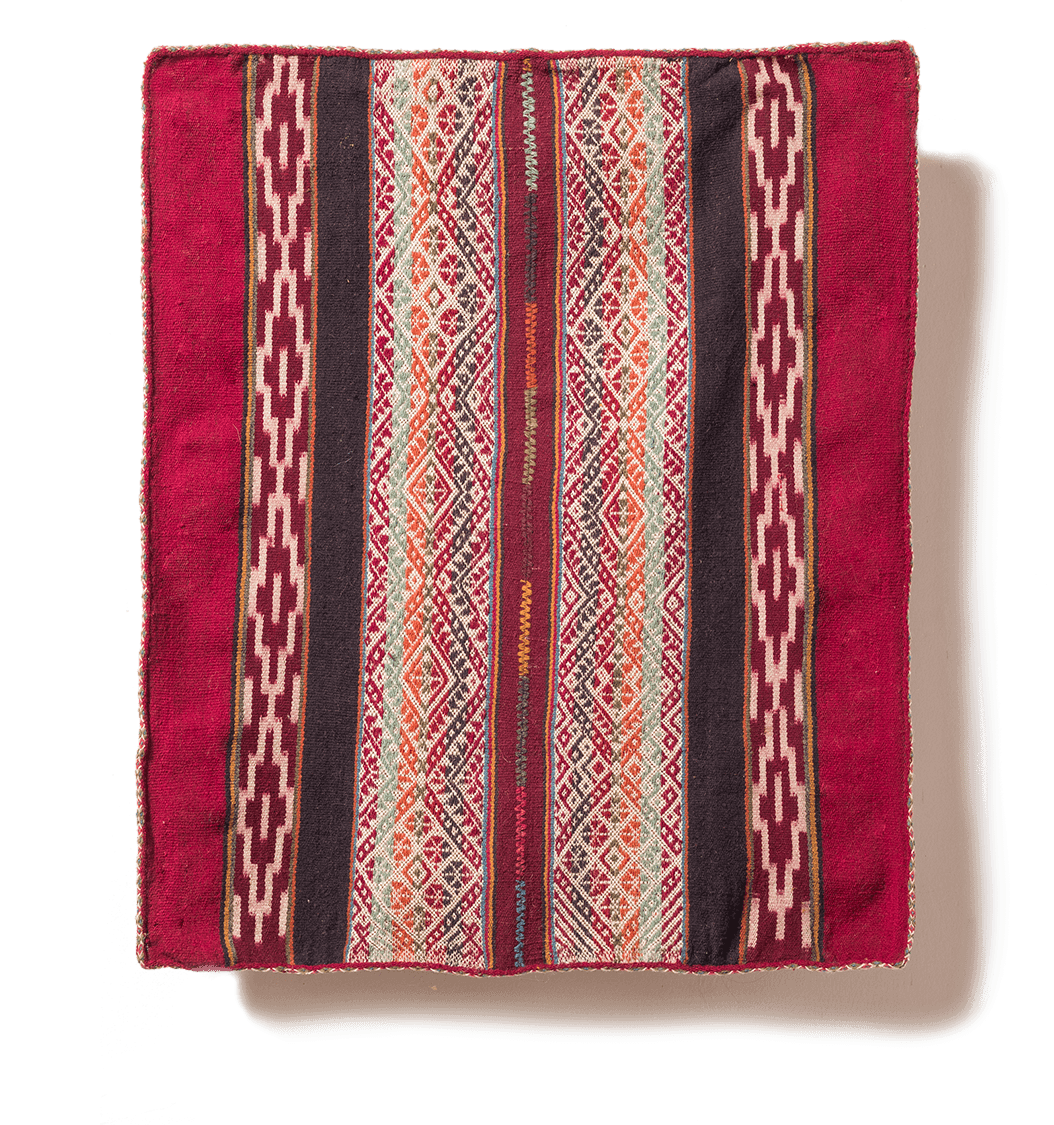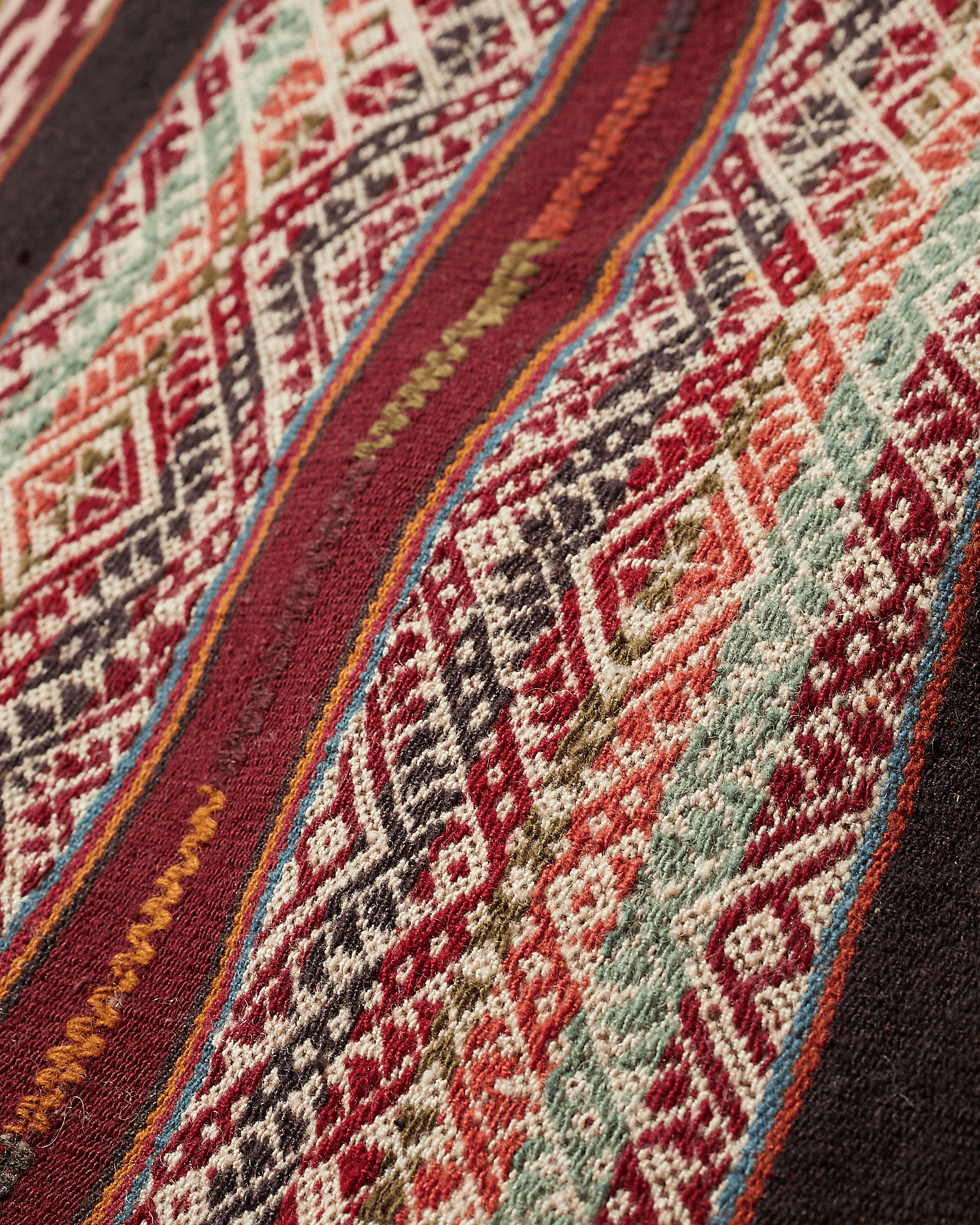

History behind the piece
The unkuña, formed as a small sacred bundle, usually houses powerful masters known as khuyas. These khuyas can be represented in the form of stones or crystals from sacred places, such as ancestral temples or mountains and lagoons. These natural masters work closely with their bearer as allies and guides, representing the connection between one and those sacred spaces, or more precisely, the spirits that inhabit those places, helping to transmute and transform, to heal and also to bless. In this way, the ceremonial unkuña represents the personal universe. When you open it, you open your universe in a purely own act.
Another special factor in the elaboration of this ceremonial weaving is the twisting with which its threads were made, since to produce an unkuña it is necessary to intentionally twist to the left, part of the strands with which the cloth will later be woven, a considerably more difficult action than the regular way to the right. According to the Andean beliefs, the threads twisted to the left attributed to the whole weaving the power to protect the wearer.

This intricate weaving, whose production process is particularly different from that developed by any other high Andean community, does not rely on a special technique to create its iconography, but on the contrary generates sections of plain weave in solid color to later be able to embroider a remarkable design pattern.
Another important and distinctive section for the Santa Cruz de Sallac weaving is that of the watay. This dyeing technique, also called ikat, reserves knotted spaces and exposes others to the dye, thus coloring patterns directly on the threads that occupy the ends of the fabric to finally draw a chakana (Andean cross). Color has a special meaning beyond its beauty, since the combinations are not used by chance, but rather respect schemes capable of indicating the geographical space to which the fabric belongs. This in particular is a piece made with sheep's wool, an example considered an expression of ethnographic art1.
Unlike many handmade fabrics that are currently developed on large pedal looms made of wood from the colonization era, this traditional piece was made on a simple backstrap loom; instrument used for more than 5000 years by the ancient inhabitants of the Andes.

Its creation took about a month and a half just in terms of setting the loom and the careful development of the weaving. It should be noted that this time does not include the previous processes through which its fibers pass: from the shearing of the animal, cleaning of impurities and weeding the fiber, the color classification, the ordered of the strands, the twisting of the same for the obtaining threads, even dyeing with plants (if applicable), processes that are also carried out by hand.
This piece preserves the characteristics of shape, color, decoration and size typical of the ceremonial unkuñas from the community of Santa Cruz de Sallac. Its multicolored fabric that goes from burgundy to black, passing through hints of orange, mint and strawberry (dyed with wild pigments) dedicates its iconographies mainly to the fields of roses illuminated by stars.
Origin: Santa Cruz de Sallac, Cusco
Measurements: 72 cm x 60 cm
Condition: Excellent
SKU: 0484
Measurements: 72 cm x 60 cm
Condition: Excellent
SKU: 0484
USD
$ 780.00
$ 780.00
1Ethnographic Art is considered to be that production made by the member of an ethnic group, made exclusively for personal or communal use, and that necessarily carries a cultural load of the people to which it belongs.
AÑADE ESTA PIEZA A TU LISTA DE DESEOS
